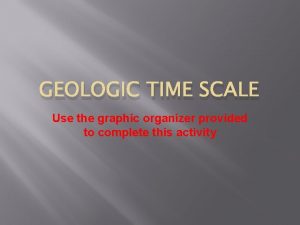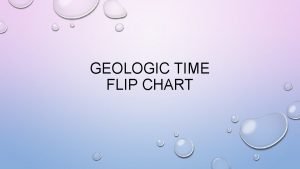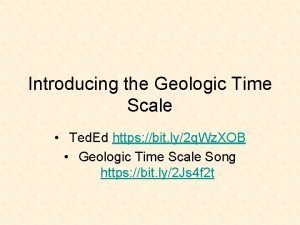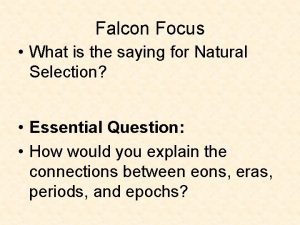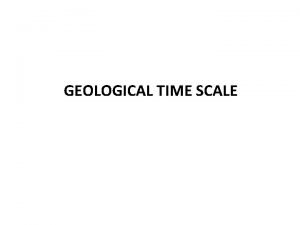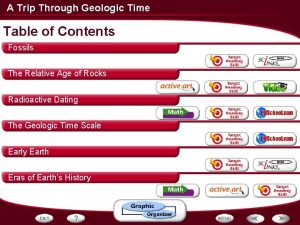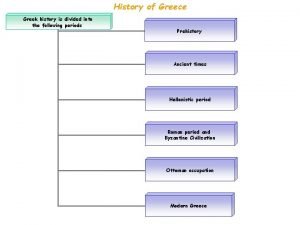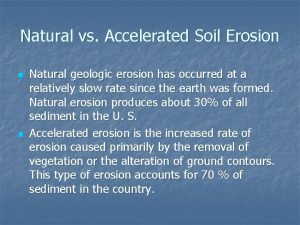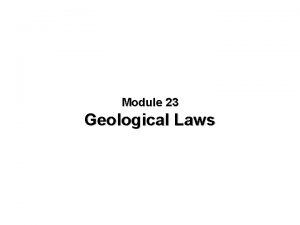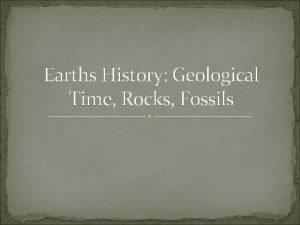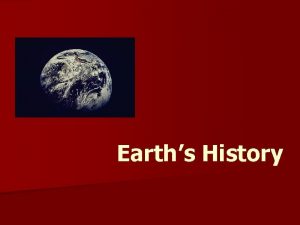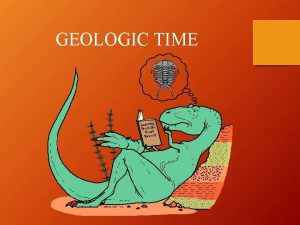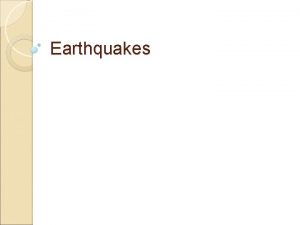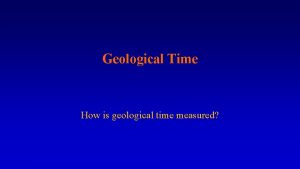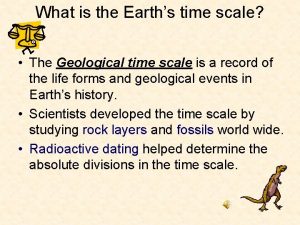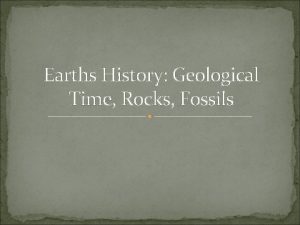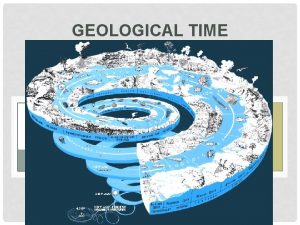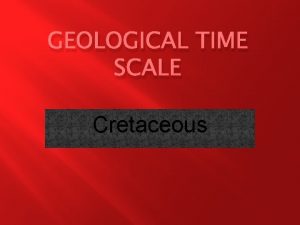GEOLOGICAL TIME SCALE Earths history is divided into













- Slides: 13

GEOLOGICAL TIME SCALE

Earth’s history is divided into units of time that make up a geological time scale which is divided into four major subdivisions: • Eons – longest subdivisions; based on abundance of fossils • Eras – marked by significant worldwide changes in the types of fossils present in rock • Periods – based on types of existing life globally at a particular time • Epochs – divided periods characterized by


Geological time begins with a long span of time called Precambrian Time, which covers about 88 percent of Earth’s history and ended about 544 million years ago. Scientists hypothesize that Earth formed roughly 4. 6 billion years ago.

Precambrian Time (4. 6 billion-544 million years ago) During the first several hundred million years of Precambrian Time, an atmosphere, oceans and continents began to form. • very few fossils remain from this time • Precambrian rocks have been buried, causing fossils to be changed by heat and pressure • most Precambrian organisms lacked hard parts

Earliest life form to appear was cyanobacteria, or blue-green algae which added oxygen to the atmosphere through photosynthesis

EARTH’S ERAS

The time between Precambrian Time and the present is divided into three long units called eras: • Paleozoic era – oldest era divided into six periods • Mesozoic era – middle era divided into three periods • Cenozoic era – youngest era divided into two periods

Paleozoic Era 544 million years ago to 245 million years ago Early Paleozoic consists of the Cambrian and Ordovician periods • often called Age of Invertebrates • continents covered by large, shallow inland seas • no life existed on land; Ordovician period ended with mass extinction

Paleozoic Era Middle Paleozoic consists of Silurian and Devonian periods • often called Age of Fishes • some invertebrates lived on land (cockroaches/dragonflies) • continents colliding forming mountain ranges

Paleozoic Era Late Paleozoic consists of Carboniferous and Permian periods • Age of Amphibians (reptiles evolved from amphibians) • continental collisions led to formation of Pangaea • largest mass extinction occurred, reason under debate

Mesozoic Era 245 million to 65 million years ago • often called the Age of the Reptiles • contained the Triassic, Jurassic and Cretaceous periods • dinosaurs dominated, small mammals and birds appeared • flowering plants (angiosperms) appeared • Pangaea separated into continents, oceans began to form • mass extinction from large meteorite impact scientists believe

Cenozoic Era 65 million to present • Early in Tertiary period, India collided with Asia to form Himalayas, Africa and Europe collided to form Alps; Cascades and Sierra Nevadas began to form in North America • new grasses and flowering plants dominated land • mammals continued to evolve • Homo sapiens, or humans appeared about 400, 000 years ago – we live in the Holocene epoch of the Quaternary period
 Graphic organizer of geologic time scale
Graphic organizer of geologic time scale Rubric for designing geological time scale
Rubric for designing geological time scale The geological time scale
The geological time scale Geological time scale with events
Geological time scale with events Geological time scale with events
Geological time scale with events Geological time scale
Geological time scale Geologic time
Geologic time Egyptian history is divided into
Egyptian history is divided into History is divided into
History is divided into Continental drift vs plate tectonics theory
Continental drift vs plate tectonics theory Geological influence on architecture
Geological influence on architecture Differentiate between geological and accelerated erosion
Differentiate between geological and accelerated erosion Module 23
Module 23 Dharma wijewickreme
Dharma wijewickreme
